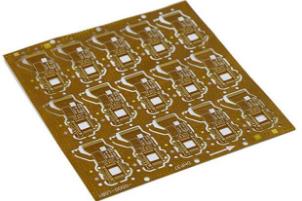A major trend in the field of electronic design is the use of open source hardware and its supporting open source schematics and PCB layout drawings. The use of open source hardware and its supporting resources means that engineers can easily use existing design solutions, thereby increasing efficiency and reducing time to market. As engineers gain a deeper understanding of the difference between traditional PCB and open source PCB design, this trend will most likely grow further.
Open source PCB design has several major advantages over traditional PCB design, including the repetitive availability of power and digital parts and high-speed data parts, which makes engineers more inclined to open source PCB design. In the past design process, engineers have been facing the problem of power supply layout. In open source design, the circuit board becomes faster and equipped with RF architecture, which makes the power supply layout more complicated, and engineers must pay more attention to it. The line width, line spacing and through holes of the circuit board. In the open source PCB design environment, as long as the layout is proven effective, it can be copied and used, without the need to redesign from scratch.
growth trend
When designing higher-speed circuit board layouts (or layouts with similar performance), many engineers are generally accustomed to refer to application notes or ask manufacturers for help, and even use the PDF version of the circuit board to measure the wiring to scale on paper. Therefore, when faced with application designs involving diverse and complex layouts, engineers prefer open source PCBs. Open source design is easy to use. Engineers can complete all module designs of the PCB design process without being a “layout expert”. Especially when encountering special problems, engineers will obviously feel no layout pressure. For example: For the difficult power module in traditional PCB design, if the existing open source design scheme is used, its layout will become simpler. Complicated PCB design layouts such as power supply, high-speed interfaces and circuits, and even impedance matching circuit layouts can be reused or copied simply and quickly through open source.

Challenges and advantages
The integration of open source design faces several challenges, such as more noise issues. When the circuit board uses high-current switches, the noise will be scattered into other circuits. But the biggest and most important challenge facing open source design may be the change in the learning curve. For a simple example, although engineers can easily copy and paste open source layouts, they may also lose the opportunity to learn the basics of a complete design, including setting spacing, necessary line widths, and impedance matching.
This undoubtedly puts engineers in a dilemma: if you do not use open source design, you will encounter certain component design problems in the design process, and use open source design may not be able to learn in-depth design knowledge. If engineers cannot understand the basic principles of design, they will find it difficult to cope with the unique design challenges in the future.
On the other hand, using open source design can provide engineers with a new perspective on the PCB design process. In other words, if the method is right, the learning obstacles caused by the use of open source design can be transformed into a real learning opportunity.
Using open source design can provide a starting point for engineers to learn design. If engineers regard open source layout as a reference point, then they can learn PCB design knowledge in depth. Starting from this reference point, engineers can think backwards in order to better understand why certain layouts adopt a certain layout method, which creates a new method for engineers to learn from existing designs that cannot be provided by traditional PCB design models. .
Going back to the power supply design mentioned earlier, if the engineer uses an open source layout in the design process, then the design process can be reversed from the results based on the specific components, line spacing, and number of copper wires used in the power supply design. This provides engineers with An excellent opportunity to learn the basics of design from practice, including thermal management, impedance matching, power supply layout, etc.
Some tips
Engineers must carefully decide whether to use open source designs, because not all open source designs are indeed "proven." For example, some engineers may not fully consider whether it is applicable to other engineers' design layouts when creating an open source layout. Take the thermal management of open source design as an example. If the engineer does not fully understand the difference between the design solutions, then the design may fail. Simply put, sometimes we don't know the source of the open source layout used, so it is difficult to predict its reliability.
Take the power module design based on the open source layout again. At first, engineers may think that the circuit board is working well and integrate it into the design. But when entering the testing phase, it may be discovered that the initial design has not been fully tested to meet specific specifications or requirements, such as electromagnetic interference (EMI) caused by radiation or conduction.
Fortunately, engineers who use open source layout for the first time can refer to the following precautions. PCB layouts from semiconductor suppliers may be more robust and reliable than layouts from online announcements, websites or forums. Just as engineers in the e-column open source discussion group like to gather on the e-column platform to discuss, other PCB design engineers in the same industry regard the forum as one of the channels to discuss the success and failure of specific open source layouts. With the gradual transformation of PCB design methods to open source models, we must clearly understand the challenges, advantages and unique learning opportunities brought by open source PCB design. This will not only benefit engineers and manufacturers, but will also strongly promote the development of the entire PCB industry. .